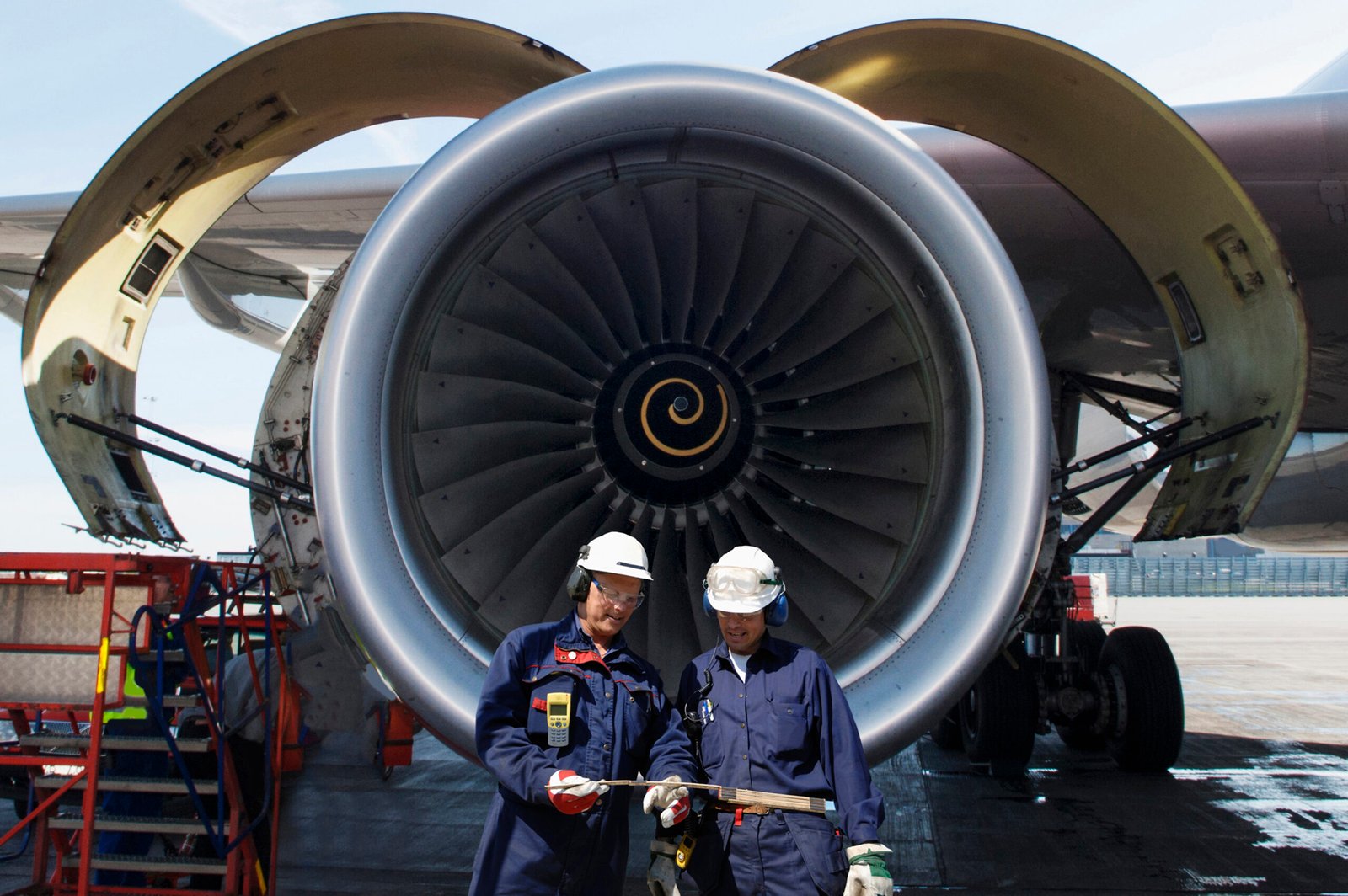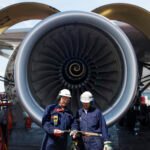Social Media
A Pilot’s Perspective: Insider Tips for Aspiring Aviators
Embarking on the journey to become a pilot is an exhilarating adventure filled with dreams of soaring through the skies. However, that path can be paved with challenges and uncertainties. As an aviator who’s navigated this course, I’m excited to share essential insights, particularly tailored for those looking to take flight in their aviation careers.
*Choosing the Right Aviation School**
One of the most crucial steps in your journey is selecting an aviation school that aligns with your goals. Aviation schools typically offer various types of courses catering to different aspirations:
1. **Private Pilot License (PPL):** Ideal for beginners, this course introduces you to the fundamentals of flying and grants you permission to fly solo or with passengers under visual flight rules.
2. **Commercial Pilot License (CPL):** Aimed at serious aviators wanting to turn their passion into a profession, this program dives deeper into navigation, meteorology, and advanced flying techniques.
3. **Instrument Rating:** For those who wish to fly in varying weather conditions, this training teaches pilots how to control aircraft using instruments rather than visual references.
4. **Flight Instructor Certificate (CFI):** If sharing knowledge excites you, consider becoming a flight instructor. This certification allows you to teach aspiring pilots while honing your own skills.
5. **Airline Transport Pilot License (ATPL):** The pinnacle of pilot certifications, this license is required for those aiming for careers as airline captains or other high-level positions within commercial aviation.
Each of these pathways opens doors not only to personal fulfillment but also to diverse career opportunities across the aviation sector.
*Explore Online Resources**
In today’s digital age, connecting with fellow enthusiasts and seasoned professionals has never been easier. Here are some valuable online resources where aspiring aviators can find inspiration and information:
**Aviation Blogs:** Websites like *The Flight Deck* and *Aviation Weekly* provide insights from industry veterans about trends, tips, and experiences that could shape your understanding of aviation.
**Websites:** Check out *SkyVector*, which offers route planning tools alongside aeronautical charts crucial for every pilot’s toolkit.
**Social Media Sites:** Platforms like Instagram and Twitter are brimming with accounts dedicated solely to aviation content—follow hashtags like #PilotLife or #AviationGeek for daily doses of aerial inspiration!
Engaging with these platforms can help you stay updated on industry developments while also allowing you to network within the community.
*Training Through FAA-Approved Schools**
When it comes down to practical training, FAA-approved flight schools are indispensable resources that provide structured learning environments equipped with top-notch facilities:
1. **Flight Schools:** These institutions often feature experienced instructors and modern fleets that cover everything from basic flying skills to advanced maneuvers necessary for commercial piloting.
2. **Airplane Schools:** These specialized schools focus on specific aircraft types or capabilities—perfect if you have a particular interest in flying certain planes!
3. **Simulators:** Many programs now incorporate state-of-the-art simulators that mimic real-world flying scenarios without leaving the ground! This technology helps enhance decision-making skills under pressure while ensuring safety during initial training phases.

In conclusion, whether you’re just starting your journey or looking toward advanced training options, remember: every pilot was once an aspiring aviator fueled by passion and determination. With the right education path chosen from reputable sources online or through FAA-approved schools—and a savvy approach towards networking—you’ll be well on your way toward achieving those lofty dreams! So gear up; adventure awaits!
Pilot Dreams: Insights from the Cockpit and the Journey to Becoming a Pilot
The world of aviation is captivating, beckoning dreamers to the cockpit with promises of endless horizons and the thrill of flight. For aspiring pilots, the journey begins well before they take their first solo flight; it starts at aviation schools that offer various courses tailored to different aspirations within this vast field. Whether you’re eyeing a career as a commercial pilot or simply wish to fly for leisure, understanding your educational options is crucial.

*Aviation Schools by Types of Courses**
When considering your path into aviation, it’s essential to know that not all aviation schools are created equal. They can be broadly categorized based on course offerings:
1. **Private Pilot Training**: These programs focus on teaching the basics of flying and are often the first step for aspiring pilots. Students learn about aircraft operations, navigation, weather patterns, and safety procedures.
2. **Commercial Pilot Programs**: Designed for those looking to make flying their career, these courses delve deeper into advanced flying techniques and regulations. Students receive hands-on training in multi-engine aircraft and must log a specific number of flight hours.
3. **Airline Transport Pilot (ATP) Training**: This is typically pursued after obtaining a commercial license. It prepares pilots for flying larger aircraft for airlines, emphasizing complex systems management and crew resource management.
4. **Flight Instructor Courses**: Many pilots enhance their qualifications by becoming certified flight instructors (CFIs). This not only helps them accumulate required flight hours but also allows them to teach others how to fly.
5. **Specialized Aviation Programs**: Some schools offer niche courses in areas like aerial photography, agricultural aviation, or bush flying—ideal for those looking to carve out unique niches in the industry.
As you embark on this exciting journey, don’t forget the wealth of resources available online!
*Lists of Aviation Blogs, Websites, Social Media Sites**
The digital age has made it easier than ever for aspiring aviators to connect with seasoned professionals and fellow enthusiasts alike. Here are some top-notch platforms worth exploring:
**Blogs**:
– *The Flying Engineer*: A blog focused on technical insights into aviation engineering.
– *Pilot Journey*: Offers personal experiences from various pilots sharing tips about training and life in the skies.
**Websites**:
– *AOPA.org*: The Aircraft Owners and Pilots Association provides resources on safety information and pilot training.
– *SkyVector.com*: An invaluable tool for navigation charts and planning flights.
**Social Media Sites**:
– Follow hashtags like #AvGeek or #FlyingForFun on Instagram for stunning visuals from around the globe.
– Join Facebook groups such as “Pilots’ Lounge” where members share advice and experiences daily.
*FAA Flight Schools/Airplane Schools/Simulators**
Navigating through FAA-approved flight schools is critical when selecting where to train; these institutions adhere strictly to safety standards set by federal regulations. Look for accredited facilities boasting professional instructors who can guide you through practical skills as well as classroom knowledge.
Additionally, many schools now incorporate cutting-edge simulators into their curriculum—these virtual environments allow students to practice maneuvers without leaving solid ground while providing invaluable experience in handling emergencies or unexpected situations safely.
In conclusion, stepping into an aircraft comes with immense responsibility but equally exhilarating rewards! With numerous resources available—from specialized courses at reputable aviation schools to engaging online communities—the sky is truly just the beginning of your journey towards fulfilling your pilot dreams! Embrace every moment; each one brings you closer to taking control of your destiny amid the clouds!
Flying Into the Future: The Latest Innovations in Aviation Technology
The aviation industry stands on the brink of a technological revolution, blending tradition with cutting-edge innovations. From training pilots with advanced simulators to the rise of drones and online learning platforms, the future is taking flight in ways we could hardly imagine just a decade ago. Let’s delve into some of the latest advancements transforming how we approach aviation.

*Aviation and Technology Training: Simulators**
Gone are the days when aspiring pilots had to rely solely on real aircraft for training. Today, flight simulators have become an integral component of pilot education. These sophisticated tools replicate real-world flying conditions with stunning accuracy, allowing trainees to experience everything from routine maneuvers to emergency situations without leaving the ground.
Modern simulators incorporate virtual reality (VR) technology, making training sessions immersive and realistic. Learners can engage in simulated flights that mimic weather changes or mechanical failures, thus better preparing them for actual flight scenarios. This innovative training not only enhances safety but also optimizes costs associated with traditional flight instruction.
*Essential Aviation Blogs and Resources**
For those who want to stay informed about ongoing developments in aviation technology, numerous blogs and websites serve as valuable resources:
1. **The Points Guy** – Focuses on travel tips and airline news.
2. **Airliners.net** – A community-driven site showcasing photos and discussions on aviation topics.
3. **Aviation Week** – Offers insights into aerospace trends, technology advancements, and industry analysis.
4. **FlightGlobal** – Provides updates on airlines, aircraft manufacturers, and regulatory changes.
5. **Jetwhine** – A mix of opinions on aviation issues along with entertaining stories from pilots.
Social media platforms like Twitter feature hashtags such as #AvGeek or #PilotLife that connect aviation enthusiasts globally. Following accounts of airlines, flight schools, or influential aviators can keep you updated while also building your network within this exciting field.
*Online Aviation Courses: Ground Schools & Careers**
The advent of online education has made it easier than ever to pursue a career in aviation without geographical constraints. Many organizations offer comprehensive online courses that cover foundational knowledge essential for aspiring pilots or those looking to start careers in ground operations.
These courses often include Ground School programs that prepare students for FAA certification exams while providing flexible scheduling options—ideal for busy individuals juggling work and study commitments. Platforms like Coursera or Udemy host various programs ranging from introductory pilot training to specialized subjects such as air traffic control or aircraft maintenance.
With growing demand for qualified pilots due to global travel resuming post-pandemic, many airlines actively recruit trained professionals through dedicated job boards like PilotJobs.com or Avjobs.com.
*The Drone Revolution**
Drones have emerged as one of the most intriguing facets of modern aviation technology. With applications ranging from aerial photography to package delivery and agricultural surveillance, these unmanned aerial vehicles (UAVs) are reshaping industries across the board.
Regulatory bodies like the Federal Aviation Administration (FAA) provide guidelines around drone usage ensuring safety while promoting innovation in this sector. Their website offers comprehensive resources about drone registration processes along with information concerning Part 107 licensing—a must-have for commercial drone operators.
In conclusion, as we fly into an exciting future where technology meets traditional practices within aviation, staying updated through reliable sources becomes vital for enthusiasts and professionals alike. Whether it’s embracing simulator training or exploring online courses tailored specifically for aviation careers—or even navigating the new world of drones—the sky truly is not the limit; it’s just the beginning!

From Runway to Reality: The Transformative Power of Drones
In the realm of aviation, the intersection of technology and training has reached unprecedented heights. The evolution from traditional flight methods to modern innovations like drones illustrates a transformative journey that reshapes both our skies and our training methodologies. As we delve into this airborne revolution, it becomes clear that embracing technology is not just optional; it’s essential for anyone aspiring to soar in the aviation world.

First and foremost, simulators have revolutionized aviation training. Gone are the days when aspiring pilots solely relied on hours spent in real aircraft. Today’s sophisticated flight simulators replicate every conceivable scenario a pilot might face, providing a safe environment for skill enhancement. These simulators range from basic to highly advanced systems, enabling pilots to practice everything from routine takeoffs to emergency landings without risking lives or equipment. This immersive experience cultivates confidence, sharpens decision-making skills, and facilitates better retention of knowledge—making it a cornerstone of modern pilot education.
For those seeking insight into the vast landscape of aviation commentary and expertise, numerous blogs and websites serve as invaluable resources. Sites like *Airliners.net* offer forums for discussion among aviation enthusiasts, while *The Points Guy* provides tips on maximizing travel rewards—highlighting how various technologies can enhance air travel experiences. Additionally, social media platforms such as Instagram and Twitter buzz with accounts dedicated to aviation photography and industry news. Accounts like @AviationDaily or @PilotVlogs engage followers with captivating visuals and updates about current events in the aviation sector.

Recognizing the need for continuous learning in this rapidly evolving domain is crucial. Online aviation courses have surged in popularity, making education accessible regardless of geographic location. Institutions like Embry-Riddle Aeronautical University offer comprehensive ground schools that cater to all levels—from novice flyers to seasoned professionals looking to update their skills amidst technological advancements. Platforms such as Coursera feature specialized courses on drone operations or aerodynamics that allow learners flexibility while diving deep into complex subjects at their own pace.
With this technological boom comes a plethora of job opportunities within the field—especially for pilots trained in drone operation. According to recent FAA reports, commercial drone usage is projected to grow exponentially over the next decade across various sectors including agriculture, real estate, emergency services, and logistics. This demand creates an enticing career path for those who already possess piloting skills or seek certification specifically tailored toward unmanned aerial vehicles (UAVs).
Navigating this new terrain requires understanding regulatory guidelines set forth by authorities like the Federal Aviation Administration (FAA). Their website serves as an essential resource where budding pilots can find information on licenses needed for drone operators alongside safety regulations necessary for compliant flying practices. The FAA’s Remote Pilot Certification program ensures that individuals are well-versed in operating drones safely while following established protocols—a vital component in promoting responsible use as this technology proliferates.
In conclusion, as we transition from runways crafted for manned flights towards expansive skies ripe with possibilities offered by drones, embracing these innovations leads us toward exciting futures within aviation careers—ones filled with endless opportunities for growth and exploration. The synergy between technology training via simulation and online coursework encapsulates a commitment to excellence that will undoubtedly shape tomorrow’s aviators into pioneers ready to navigate uncharted territories above us all!
Exploring the World from Above: The Rise of Drone Delivery Services
In a world that craves convenience, the aviation industry has soared to new heights, merging cutting-edge technology with innovative service models. One fascinating development is drone delivery services, which are transforming how we think about logistics and transportation. As drones become more prevalent in our skies, understanding the foundational elements of aviation technology and training becomes essential.
Aviation today is not just about flying planes; it’s a blend of science, technology, and creative problem-solving. Aspiring aviators often start their journeys through simulators—virtual platforms that replicate real-world flying experiences without leaving the ground. These simulators have evolved dramatically over the years, providing realistic environments that help students grasp complex concepts while honing their skills. From basic flight maneuvers to advanced navigation techniques, simulators offer an invaluable tool for both novice pilots and seasoned professionals seeking to sharpen their expertise.
If you’re interested in diving deeper into aviation topics or keeping up with industry trends, numerous blogs and websites cater to enthusiasts and professionals alike. Some noteworthy mentions include “Airliners.net,” where aviation photography meets discussions on commercial air travel. Another great resource is “The Aviation Herald,” offering insights into accident reports and safety information. Additionally, social media platforms host vibrant communities such as “FlyByWire” on Twitter or various Facebook groups dedicated to pilot training and aircraft appreciation.
For those looking to break into the field—or simply expand knowledge—online aviation courses have flourished in recent years. Ground schools like King Schools or Jeppesen provide comprehensive programs covering everything from private pilot licensing to instrument ratings. Increasingly popular are MOOCs (Massive Open Online Courses) offered by institutions like Embry-Riddle Aeronautical University that cover diverse topics within aviation management and aerospace studies. With flexibility at your fingertips, these online options make it easier than ever for individuals to gain valuable skills at their own pace.

Of course, no discussion about modern aviation would be complete without mentioning job opportunities available for pilots today. The demand for qualified aviators continues to grow alongside technological advancements in air transport systems. According to forecasts from the FAA (Federal Aviation Administration), thousands of new pilots will be needed in the coming years due to retirements and increased air traffic demands—a golden opportunity for aspiring aviators!
As we embrace this new era of aerial innovation, drones have emerged as game-changers in delivery services across various sectors—from e-commerce giants delivering packages directly to doorsteps within hours to medical supplies reaching remote areas quickly and efficiently. The FAA plays a crucial role here too; they regulate drone operations ensuring safety while encouraging innovation through initiatives like Part 107 certification for commercial drone pilots.
For anyone wanting more information on regulations or educational resources related specifically to drones, visiting the official FAA website is imperative. They provide guidelines not only on operations but also on legalities surrounding drone usage—essential knowledge for those venturing into this exciting field.
With each passing day, the synergy between aviation technology and everyday life strengthens exponentially. Whether you’re considering becoming a pilot or simply fascinated by how drones reshape logistics infrastructure worldwide—the sky’s truly no longer the limit! Embrace this thrilling journey above us—it’s boundless!




